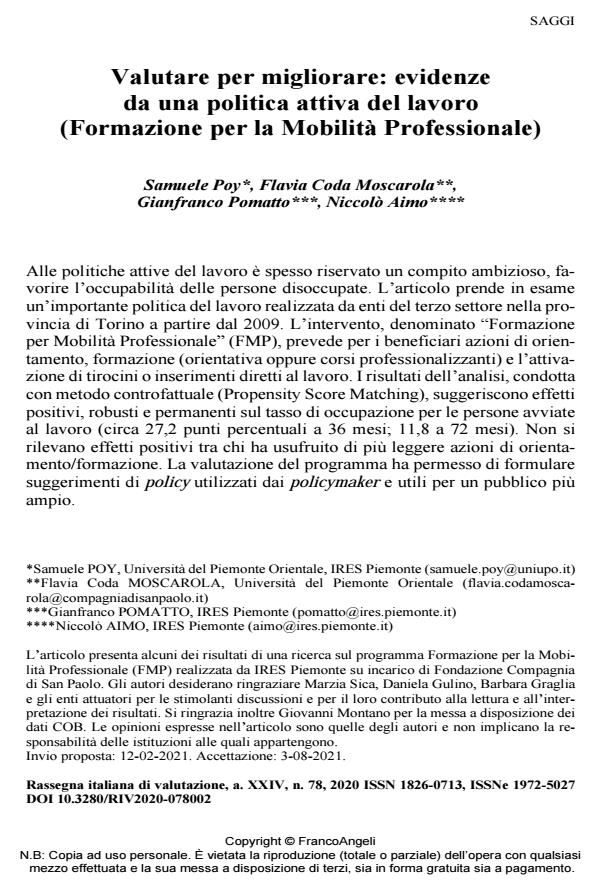Valutare per migliorare: evidenze da una politica attiva del lavoro (Formazione per la Mobilità Professionale)
Titolo Rivista RIV Rassegna Italiana di Valutazione
Autori/Curatori Samuele Poy, Flavia Coda Moscarola, Gianfranco Pomatto, Niccolò Aimo
Anno di pubblicazione 2022 Fascicolo 2020/78
Lingua Italiano Numero pagine 28 P. 11-38 Dimensione file 331 KB
DOI 10.3280/RIV2020-078002
Il DOI è il codice a barre della proprietà intellettuale: per saperne di più
clicca qui
Qui sotto puoi vedere in anteprima la prima pagina di questo articolo.
Se questo articolo ti interessa, lo puoi acquistare (e scaricare in formato pdf) seguendo le facili indicazioni per acquistare il download credit. Acquista Download Credits per scaricare questo Articolo in formato PDF

FrancoAngeli è membro della Publishers International Linking Association, Inc (PILA)associazione indipendente e non profit per facilitare (attraverso i servizi tecnologici implementati da CrossRef.org) l’accesso degli studiosi ai contenuti digitali nelle pubblicazioni professionali e scientifiche
Samuele Poy, Flavia Coda Moscarola, Gianfranco Pomatto, Niccolò Aimo, Valutare per migliorare: evidenze da una politica attiva del lavoro (Formazione per la Mobilità Professionale) in "RIV Rassegna Italiana di Valutazione" 78/2020, pp 11-38, DOI: 10.3280/RIV2020-078002